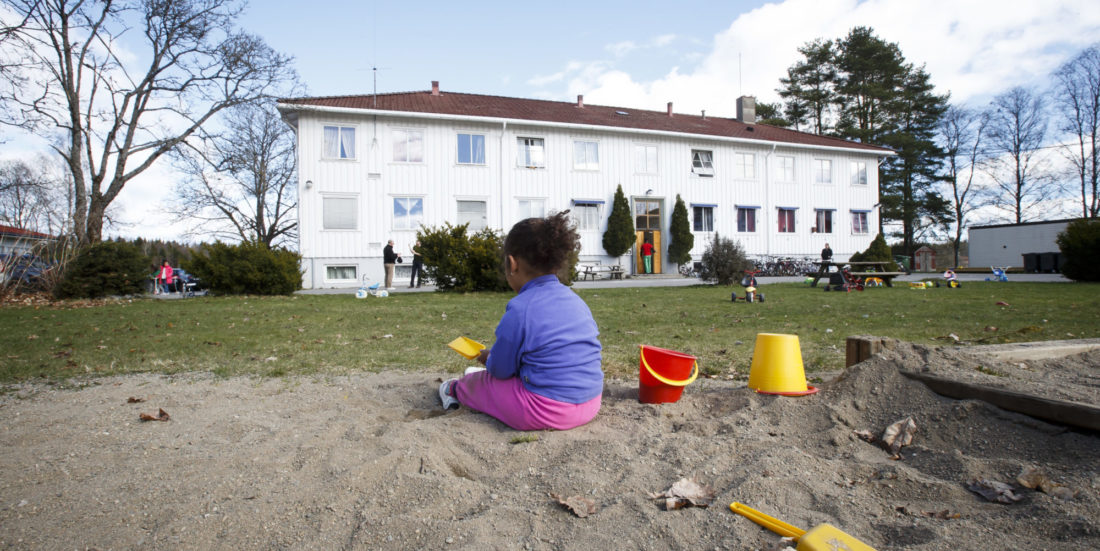When life is put on hold, volunteers can make a difference
When someone’s life is suddenly turned upside down, a volunteer’s helping hand can mean a lot.
World events have put child refugees and immigrants in the spotlight, especially as they wait for decisions on their fate from the host countries they have come to in search of protection.
The biggest issues have arisen around US President Donald Trump’s controversial (and currently discontinued) policy of separating children from their parents when they come to the United States at its southern border.
But even in countries with humane policies toward immigrant arrivals, children and individuals who need help from government agencies need other help, too.
NTNU researcher Veronika Paulsen says volunteers can play an important role in the lives of individuals who are in unstable situations, whether because of family crises or because they are immigrants.
“Little attention has been paid to the significance of volunteering,” in these situations, she says.
Isolated in daily life
Two groups in particularly vulnerable situations are children in Norwegian asylum reception centres and in crisis centres. Norwegian crisis shelters house about 1500 children every year. Just over 4000 people are currently in reception centres, many of them children.
These children’s lives are on hold. Nothing is like their once-normal, everyday life. They live on society’s periphery, where they are socially excluded and a lot is missing from their lives.
“These children are pretty isolated, and their special living situation keeps them outside the activities that other children are involved in,” says Paulsen, who is an associate professor at the Department of Social Work.
Paulsen has been leading a project where researchers have evaluated and documented the importance of volunteering for children – and parents – at asylum reception and crisis centres. Save the Children Norway is in charge of the volunteer activity that the researchers evaluated.
Breathing room
Researchers interviewed volunteers, employees and parents, and talked to and observed youngsters who participated in activities organized by volunteers.
“The activities are varied, and volunteers adapt them according to the children’s ages, wishes and needs. They offer activities that allow the kids to participate in things that other kids do in their usual everyday lives,” says Paulsen.
Activities include walks in woods and fields, and visits to playgrounds, sports fields, and swimming pools. Volunteers also arrange trips to the library, baking, Halloween and Christmas festivities, vacation events and much more.
“The activities give the kids a break from an often difficult daily life where they’re surrounded by adults who are having a hard time. It’s good for the kids to get a little breathing room from all of this,” Paulsen says.
Children in asylum reception centres
According to the researchers’ evaluation report on the asylum reception centres, “[c]hildren living in asylum reception centres are in a particularly vulnerable situation characterized by waiting, confusion and insecurity. Asylum existence also limits children’s activity physically, psychologically and economically. Children and adolescents are often affected by what they have gone through before coming to Norway and are enmeshed in their own and others’ concerns.”
Comments from children in the reception centres reinforce this idea.
“It’s difficult in the reception centre. Hard to live there. Just waiting and waiting. It’s good to get out and do something,” said one child.
The report also underscores the importance of allowing children in these situations to derive meaning from and the experience of mastering a challenging everyday life.
“Activities and meaningful free time are key in order to normalize an otherwise uncertain and challenging waiting time. Activities are health promoting and develop social skills in relation to other children and adults,” the report says. “Previous research shows that building social networks, becoming acquainted with cultural codes and learning the language are a decisive strength for immigrants in a new country.”
Some children told the researchers that they try to only speak Norwegian during activities with volunteers, so they can learn the language faster. The children also reported that they liked being with volunteers so they could talk to them about what is going on around them.
Some of the parents also participate in the children’s activities and are learning about Norwegian society. It helps them to connect and build networks, which may be important in the next phase if they are granted a stay in Norway. In addition, other volunteer opportunities like En god nabo (A good neighbour) also rely on volunteers who donate their time and provide a supportive hand into a new life.
Children in crisis shelters
Living in a shelter represents a different and somewhat challenging and chaotic existence for children and parents. Many don’t know how long they will be there and where they will be afterwards. Many children living in a crisis centre become passive and isolated while there and spend a lot of time indoors. This can be due to threats, physical and mental health issues and economics, according to the evaluation report on the crisis shelters.
“Shelter life is a special living situation for the children. There are lots of new people, a lot of turnover, there are crying mothers, and it can be quite traumatic. The children can’t have friends over and they can’t tell where they live. Often they have to lie and make up stories to hide where they live. A lot of children also have to change schools. This makes activities even more important,” says one of the child caregivers who was interviewed for the evaluation.
The children enjoyed having volunteers there to get help with homework and to play, the researcher learned.
The crisis centres are subject to strict safety procedures, and many centres do not allow friends and family to visit the residents. Maintaining contact with their network and families may also pose a security risk for some children. This causes a lot of children to lose contact with friends and family and become passive and isolated in their daily lives. Having activities where they have time to play and to be with other children is therefore essential. It is evident from the evaluation that the activities for children in the shelter are highly valued by them. It is also of great value for the parents.
“Everything was chaos in my head, so it was so good that they got out and had fun and came home with new experiences. And you saw that they had a sparkle in their eyes when they came back. I was terrified to let them go outside these four walls, but it was definitely worth it,” one mother said.
“The parents experience it as a good thing that someone comes and is with the kids and gives them good experiences. In a stressful situation, parents don’t necessarily have any energy or opportunity to take them out for activities,” says Paulsen.
That was exactly what one mother told the researchers.
“While they’re at the crisis centre they have so little time for friends, they take the taxi from school directly to the crisis centre so they aren’t with friends at all. There are a lot of long evenings in a crisis centre, you feel a bit isolated,” this mother said.
Value added
An important element emerged from the research, namely that what the volunteers do is just that – voluntary.
“The parents say that the fact that someone comes in and sets aside time and cares about their children, without it being their job, has added value. The volunteers come because they want to be with the children and they choose to spend their free time doing this. It makes you feel seen and cared for,” says Paulsen.
She stresses that the activities offered by the volunteer service should not take the place of the public services, but should be offered in addition.
“It’s important to recognize the intrinsic worth of volunteering. Having volunteers come in with fresh engagement and focusing only on activity and play has great value in itself and probably couldn’t happen in the same way and to the same extent through public services,” Paulsen says.
“Volunteering contributes a lot both in terms of integration and involvement for people who have been on the outside for a while,” she said
Veronika Paulsen, Berit Berg and Marianne Garvik at NTNU Social Research jointly wrote the evaluation reports on the importance of volunteering at asylum reception centres and crisis shelters (below, in Norwegian).
- Garvik, Marianne; Paulsen, Veronika. (2018) Aktiviteter og en meningsfull fritid : Evaluering av Redd Barnas frivillige arbeid med barn på asylmottak.
- Paulsen, Veronika; Berg, Berit; Garvik, Marianne. (2018) Vi klarer ikke å ha et sånt tilbud uten de frivillige! : Evaluering av Redd Barnas frivillige arbeid med barn på krisesenter.





